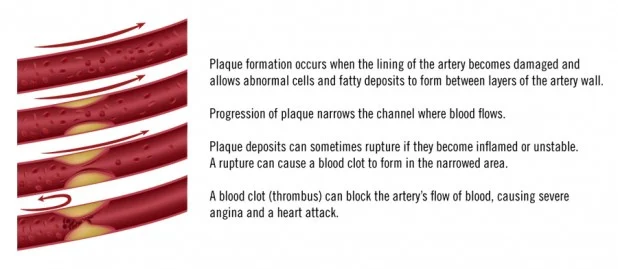Coronary Artery Disease
The inside of a coronary artery has a smooth lining through which blood easily flows. Coronary artery disease starts when the lining of the coronary artery is damaged. This often is due to a risk factor, such as smoking, hypertension or diabetes. A plaque deposit (a fatty material composed of cholesterol and other abnormal cells) forms between layers of the artery wall. This buildup, called atherosclerosis, causes the arteries to become stiff and slows the flow of blood to the heart muscle. Over time, buildup of stable plaque can clog the artery and cause a partial or total blockage.
Another way a coronary artery blockage can occur is when a plaque deposit becomes inflamed and unstable and actually ruptures inside the artery (see figure below). A rupture can narrow the artery even more and can cause a blood clot to form. If the blood clot is large enough, it will cut off blood flow immediately, and severe chest pain or a heart attack will result. If the heart muscle does not receive enough blood and oxygen, it is called ischemia. A symptom of ischemia is chest pain, called angina.
